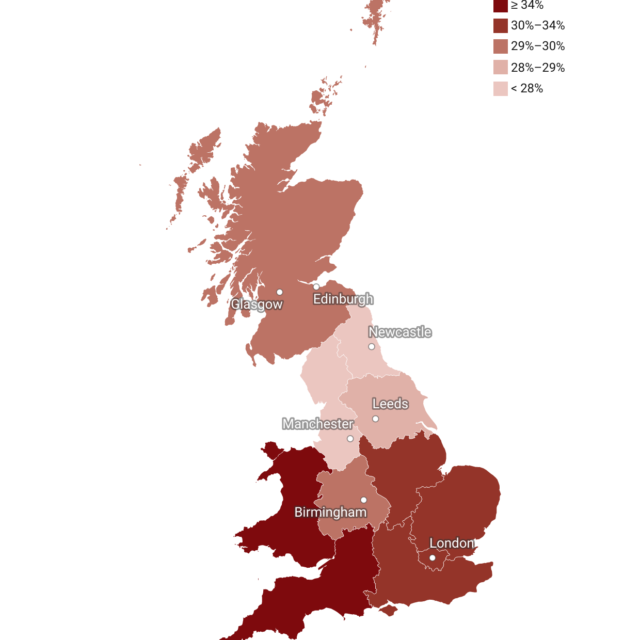Improving Food Policies for a Climate Insecure World: Evidence from Ethiopia
Climate change and weather shocks have multi-faceted impacts on food systems with important implications for economic policy. Combining a longitudinal household survey with high-resolution climate data, we demonstrate that both climate and weather shocks increase food insecurity; cash assistance and participation in Ethiopia’s Productive Safety Net Programme have reduced food insecurity; but food assistance has been ineffective.

At a global level, economic growth has tended to be accompanied by a reduction in poverty, which in turn has long been known to have the potential to reduce food insecurity and undernutrition. Indeed, there is compelling evidence that, at least in the late 20th century, income growth has led to a reduction in child undernutrition across low and middle-income countries. Likewise, improvements in food security and nutrition should contribute to economic growth. Yet after decades of steady progress in improving global food security, both the number of people undernourished, and the prevalence of undernourishment globally have increased in the past few years and are projected to increase further. Climate change is likely to make the design of effective food policies to improve food security more complicated but also more important. It is therefore timely to explore the determinants of food security, defined by FAO as existing when “all people, at all times, have physical and economic access to sufficient, safe and nutritious food that meets their dietary needs and food preferences for an active and healthy life”, and the role of food policies in reducing food insecurity, particularly in the context of a changing climate.
Ethiopia has long suffered from high levels of food insecurity, which have been closely linked to domestic food shortages and famine, which in turn have been linked in part to low-input low-output agriculture and frequent drought conditions. Consistent with global trends, the prevalence of undernourishment had been falling in Ethiopia, from 47% in 2000-2002 to 13.8% in 2014-2016. However, in recent years, and similarly consistent with global data, undernourishment has been increasing, reaching 16.2% in 2018-2020, despite relatively high levels of economic growth. In absolute numbers, 7.1 million Ethiopians received emergency food assistance in 2004, falling to just over a million in 2008.
In our paper, we combine a rich longitudinal household survey with high-resolution climate data to investigate empirically how socioeconomic characteristics, policy instruments and both climate and weather shocks impact food insecurity in Ethiopia. Our approach also allows us to identify and highlight spatial heterogeneities; explore the effectiveness of government safety net policies; and provide evidence supporting the need for multi-approached macroeconomic policies tailored to local contexts.
Our findings reveal several important implications for government policy. First both climate and weather shocks have adverse effects on food security, even after controlling for socioeconomic factors including income and rising food prices. Possible transmission channels could be declining nutritional content of food or additional physiological stress on human bodies, caused by heat and heat stress.
Second, during the time-period covered by the data, cash transfers and participation in Ethiopia’s Productive Safety Net Programme, a cash for work initiative, have been more effective than food assistance in reducing food insecurity. That cash has been found to be more effective than food is consistent with the consensus in the literature. However, local contexts matter; and how climate shocks are manifested, whether as food shortages, rising prices, or falling incomes, is likely to influence the most appropriate design of the policy instrument.
Third, we find that households that had savings to rely on had a lower chance of suffering from food insecurity. Thus, with respect to coping mechanisms, programmes that encourage and enable households to save will likely improve food security. We recognise of course that it is particularly hard for the poorest households to save. However, there is evidence that poor households may “undersave” due to imperfect markets, suggesting an important role for government policy in reducing and removing market failures.
Fourth, the role of storage has long been recognised as important for consumption smoothing in agriculture-dependent households. We find that households that were able to store at least some of their harvest with the intention of selling rather than consuming it and/or to use as seeds for planting, once prices increase, had a lower probability of food insecurity. As climate change increasingly disrupts both international food systems and domestic production, the role of government support for strategic grain reserves at the country level is likely to be increasingly important.
Finally, we find spatial heterogeneity with respect to urban and rural areas. Urban households have a lower probability of suffering from food insecurity compared to rural ones; and the impact of temperature related weather shocks is also lower on urban households. This finding suggests differentiated policies are needed for rural and urban areas.
Climate change is likely to worsen food security in East African countries through higher temperatures and changing rainfall patterns. Effective food policies will likely need to address both longer-term trends and short-term shocks. As such, food policies might be directed both to improving agricultural yields in the context of a changing climate where temperatures are increasing, and drought is more likely; and at improving households’ abilities to cope with immediate term weather shocks that tend to drive prices up and make food less affordable.
Read the full paper via Cambridge University Press
See more publications from our National Institute Economic Review

















